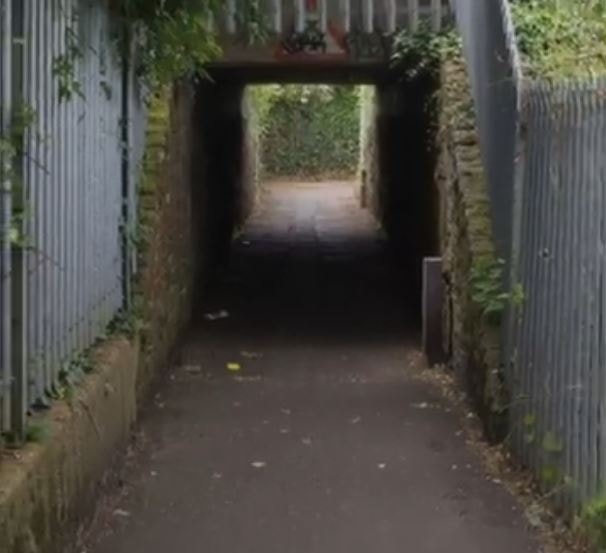You know that feeling, right? You’ve been hunting for months, maybe years, and then you see it: the dream lot. The price is perfect, the size is manageable, and you start visualizing the house you’ll build, the garden you’ll finally have. You land the deal, feeling great.
But then reality hits hard.
You can’t actually drive to it. Your property is totally, completely boxed in by your neighbors’ land. It’s what we call landlocked, and I’m telling you, it’s one of the biggest headaches thousands of Filipino property owners face. Landlocked properties are a common issue in the Philippines, often leading to disputes over access and rights of way. It kills resale value, complicates construction, and basically turns a dream into a very frustrating nightmare.

Here’s what I mean: without legal access, your beautiful piece of land is just a scenic spot you can’t fully utilize.
But, and this is the crucial part, you are not helpless. Our Civil Code has a powerful, necessary solution built in: the Easement of Passage, often just called the Right of Way (R-O-W). This easement is a legal concept with a clear legal basis under the Philippine law, specifically Articles 649 and 650 of the Civil Code, which outline the provisions for the easement of right of way, ensuring that land is never unusable simply because of an accident of geography.
This is a help guide on how you claim that right, or how you protect yourself if you’re the one being asked to surrender part of your land. We’re going to break down the five non-negotiable legal requirements. Trust me, getting even one of these wrong will send your case straight back to square one.
Your Non-Negotiable Right of Way
To start, let’s define the players. Think of this as a required partnership, whether you like the other partner or not:
- The Dominant Estate (The Claimant): This is the landlocked property that needs access. You are the one demanding a path to the public highway.
- The Servient Estate (The Neighbor): This is the adjacent property, often a neighboring property, that gives access. They have to surrender a strip of their land to solve your problem, and the right-of-way affects both properties and may involve other persons with legal interests.
In cases where co-owners are involved, their consent or participation may be required.
This isn’t an optional ask. It’s a compulsory easement. If you meet the legal tests, your neighbor, the servient estate, is legally obliged to grant the access. They cannot just wave you away because they don’t feel like it. That is the core power you hold.
The Five Non-Negotiable Requirements: Your Legal Checklist
To claim the Easement of Passage, you must prove five key things: your property is truly landlocked with no proper access to a public road, the path you want causes the least harm to your neighbor’s land, the route is the shortest reasonable one, you pay fair compensation for the land and any damages, and the legal easement is only as wide as necessary for your needs. This legal right ensures you can access your property, but it requires careful planning, proper payment, and respect for your neighbor’s land. Hiring a licensed surveyor and working with a lawyer can help you navigate this process smoothly and avoid disputes.
1. Absolute Isolation (Truly Landlocked)
Your isolation must be absolute. There can be no existing, adequate outlet to a public highway. The right of way applies when an estate surrounded by other estates or other immovables lacks access to a public road. In determining the necessity of the easement, the immovables pertaining to the landlocked property are also considered.
- The Catch: The isolation cannot be due to your own voluntary acts. Maybe it’s just me, but there are cases where people sold the portion of their lot that contained the only exit, and then tried to claim R-O-W from the other neighbor. That won’t fly. The cause of the isolation must be an inherent feature of the land, not a deliberate action you took.
2. The Path Must Be Necessary and Least Prejudicial
This is arguably the most important balancing act. The required passage must be:
- Necessary Passage: It must serve the actual needs of the dominant estate (i.e., you need it to build, live, or farm) and provide adequate access to the public road.
- Least Prejudicial Path: The path chosen must be the one that causes the least damage and disturbance to the servient estate (your neighbor), ensuring it is not a prejudicial path.
Here’s a specific, concrete detail: You absolutely need a geodetic engineer involved here. They must map out the least prejudicial path and avoid selecting a prejudicial path, not just the easiest or cheapest one for you. This technical proof is essential for the court.
The chosen route should be the alternative route that causes the least harm to the servient estate. The easement is typically established as a permanent way or permanent passage to ensure ongoing, uninterrupted access.
3. Nearest to a Public Highway
The easement should generally be established at the point least distant from the public road, crossing the least number of lands and neighboring estates to minimize impact and ensure efficient access.
However, sometimes the shortest path might cause extreme damage (it might cut through a house or a commercial building). That’s why the law allows a deviation if a slightly longer route is significantly less harmful to the servient estate (Requirement #2). Additionally, considerations for public infrastructure, such as existing or planned highways and roads, may also affect the selection of the route. It’s a practical balance that focuses on fairness.
4. Proper Indemnity Must Be Paid (The Money Talk)
This isn’t a free pass. The dominant estate must pay indemnity and pay proper indemnity to the servient estate for the land being used. The payment must constitute just compensation for the use of the land and any damages incurred by the servient estate. It is a compulsory right, but it is not charity.
We’ll break down the money next, but remember this: the lack of payment is grounds to deny the R-O-W.
5. Minimum Need (Least Possible Extent)
You only get what you need, nothing more. The width and scope of the easement must be the minimum sufficient for your needs, and cannot be claimed for mere convenience. The law requires genuine necessity, not just what would be easier or more comfortable.
- If you just need a pedestrian path to reach the main road to catch a jeepney, you don’t get a four-meter-wide driveway.
- But if the land is intended for a residential or commercial building, the easement must be wide enough to accommodate construction vehicles and utility lines.
The Indemnity Dilemma: Assessing the Value
Since Requirement #4 demands payment, let’s tackle the money. When we talk about indemnity, we’re covering two key components:
- The Value of the Land Occupied: The fair market price of the physical strip of land you will use.
- Damages Caused: Compensation for any consequential damage, like the cost of dismantling a fence, removing a small structure, or the loss of use of a fruit-bearing tree.
In addition to the initial payment, the owner of the dominant estate is typically responsible for ongoing maintenance costs associated with the right of way, including both construction and future upkeep.
The payment method depends on how the easement is granted:
| Scenario | Legal Term | Basis for Payment |
|---|---|---|
| Permanent Access | Permanent Easement | The full market value of the strip of land occupied. |
| Temporary Access | Temporary Easement | Compensation for the damages caused during the limited time of use (e.g., temporary construction access). |
Since right-of-way is usually permanent, you must expect to pay the full, current market value for the affected area. Think about it this way: get three appraisals from reliable sources. Don’t trust the first valuation; ensure you have a clear, justifiable price before negotiating.
Practicalities: Getting Down to Details
Now that you know the law, here are the real-world operational details you need to handle:
| Practical Consideration | Rule/Responsibility |
|---|---|
| Width Determination | Sufficient for Needs: No fixed meter rule. The width must be sufficient for the use of the dominant estate. If it’s for a car, 3-4 meters is often sufficient. For accuracy, a licensed geodetic engineer should be engaged to determine the exact boundaries and location of the right-of-way. |
| Utilities (Quick Tangent) | Included Right: Yes, the R-O-W usually includes the right to install water, electricity, and telecommunications lines through that same corridor. After all, the point is to make the lot usable! |
| Maintenance & Repairs | Dominant Estate Pays: The owner of the dominant estate (you, the user) is responsible for the cost of necessary repairs and maintenance of the pathway. Fair is fair: you are the primary beneficiary. Road widening projects may also affect existing easements, so always check for any planned infrastructure developments that could impact your access. Before any construction or use of the easement, obtaining environmental clearances may be required to comply with legal and regulatory standards. If disputes arise, parties are strongly encouraged to seek an amicable settlement through negotiation or mediation before resorting to litigation. |
The Exit Strategy: When the Easement Ends
The easement is not forever, and this is important for both parties to understand. For an easement to be enforceable, it must be legally established, whether by law, formal agreement, or prescription.
An easement of passage is legally extinguished the moment your dominant estate gains access to a public highway through another route. Maybe the government built a new barangay road, or you successfully bought another adjacent property that fronts the main street.
Once the need ceases to exist, the easement, which constitutes such encumbrance on the servient estate, must be removed. If there is a dispute regarding the termination or removal of the easement, civil actions may be necessary to resolve the matter in court. But here’s the crucial detail for the servient owner (your neighbor): they can demand that the indemnity they received be returned (minus legal interest) if the access is no longer necessary.
Final Actionable Steps
It’s tricky, complex, and honestly, a bit of a headache. Navigating these rules successfully requires more than just reading an article.
This process involves a proper legal action filed in court (unless you negotiate successfully), a professional geodetic survey, and serious negotiation. You absolutely need a good lawyer who specializes in land disputes and a reliable geodetic engineer to map out the least prejudicial route.
Choose your battles and negotiate first. Court battles in the Philippines are long, expensive, and stressful. Engaging in good-faith negotiation is crucial; both parties should act in good faith to resolve right-of-way disputes amicably and avoid unnecessary litigation. Bad faith actions, such as unjustified obstruction by the owner of the servient estate, can lead to civil liabilities. Offer a fair price based on solid appraisals, and try to make the path as unintrusive as possible. If negotiation fails, rest easy knowing you have the law firmly on your side, provided you meet those five requirements.
The Supreme Court has clarified the requirements for right-of-way easements and has set legal precedents in such cases, guiding property owners and landlocked owners through the process. The practical implications of pursuing a voluntary easement versus a compulsory one should be considered, as voluntary easements—established by agreement—can be less contentious and more flexible, while compulsory easements may require judicial intervention.
If you’re dealing with a landlocked property or right-of-way issues, don’t navigate these complex legal waters alone. HousingInteractive, the Philippines’ first property portal, is here to help you find property solutions tailored to your needs. Whether you’re seeking access to your dream lot or want to understand your rights and obligations, HousingInteractive connects you with experts and resources to simplify your journey. Explore your options today and turn your property dreams into reality with confidence.

























